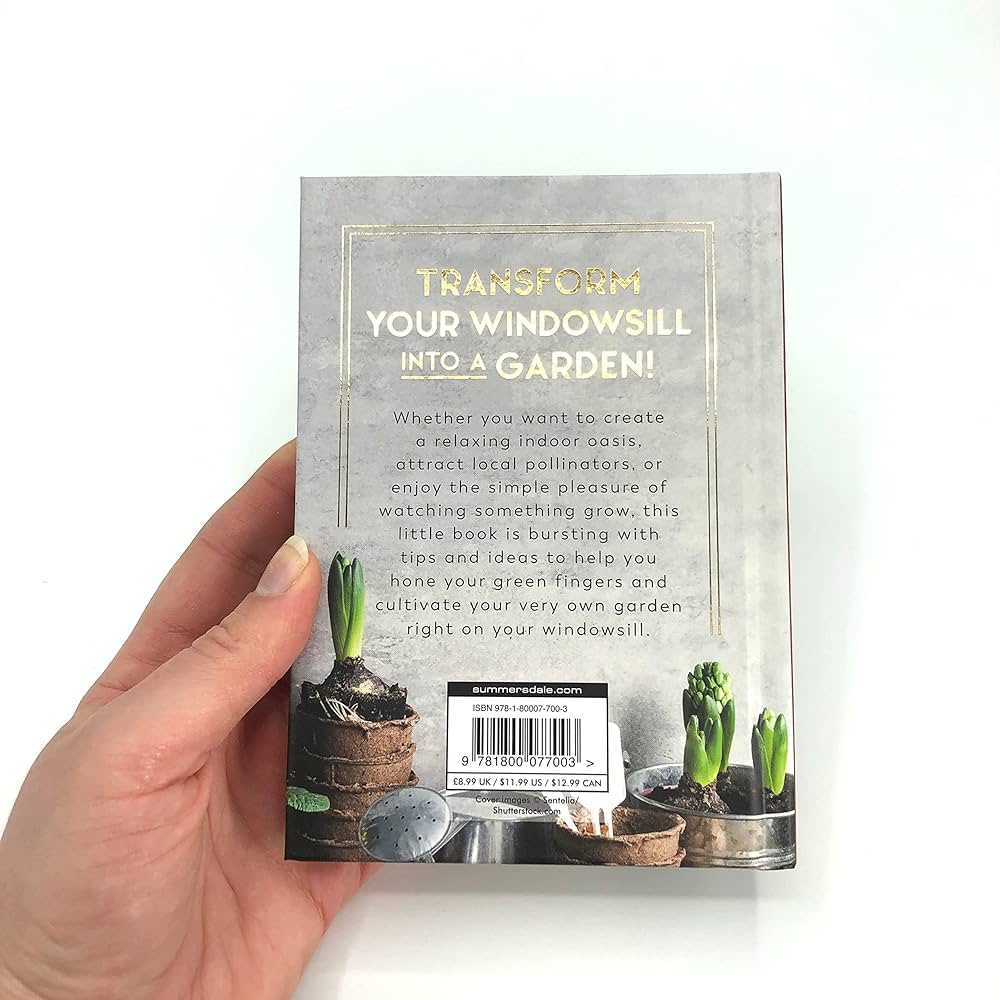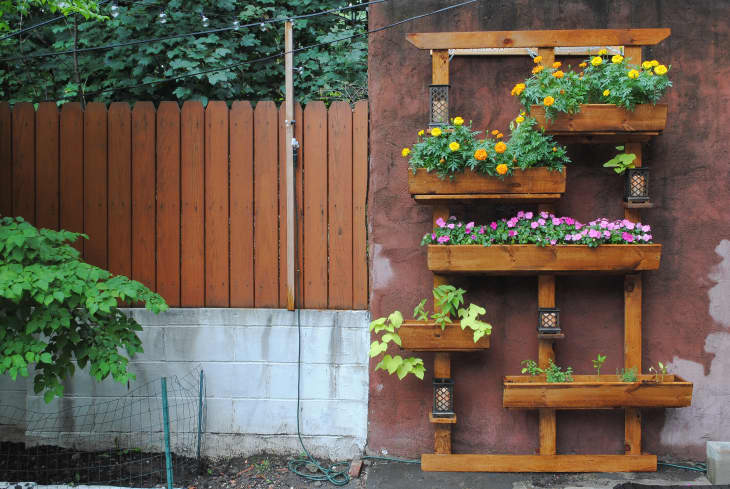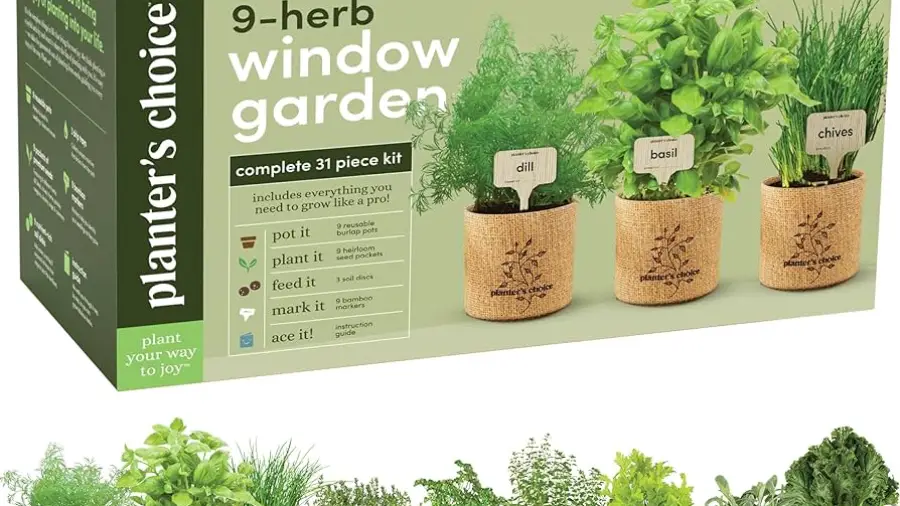Indoor gardening revitalizes living spaces and improves air quality. Explore myriad ideas like potted plants, hanging baskets, or herb gardens.
Bringing nature indoors transforms not only the aesthetics of your home but also contributes to your wellbeing. It’s a hobby that suits people living in apartments or with limited outdoor space. Indoor gardens range from simple windowsill herb setups to elaborate vertical plant walls.
Indoor Gardening Ideas: These green additions purify the air, reduce stress, and can even provide fresh herbs and vegetables all year round. By choosing the right plants for your light conditions and space, you can create a thriving garden inside your home. Keep it straightforward with low-maintenance succulents or make a statement with a large, leafy fern. Indoor gardening offers endless possibilities to blend nature with your decor while fostering a healthier home environment.
Table of Contents

Credit: www.amazon.com
Indoor Gardening: A Personal Oasis
Cultivating your personal oasis with indoor gardening breathes life into urban spaces. This trend transforms homes into lush hideaways. Plants contribute to better air quality and mood elevation. Gardening indoors nurtures a green thumb for city dwellers. It creates a serene corner to relax and reconnect with nature. Through the diligent care of plants, urban gardeners find solace and satisfaction. Each indoor plant becomes part of a unique indoor landscape.
Benefits such as stress reduction are visible with indoor greenery. Caring for plants offers a sense of accomplishment. It requires minimal space and tools but promises immense joy. Indoor gardening is perfect for those lacking outdoor areas. People of all ages can easily enjoy this rewarding hobby.
Choosing The Right Plants
Assessing your space and light conditions is pivotal for thriving plants. Firstly, evaluate the sunlight reaching various areas indoors. Areas with ample light are ideal for most plants. Corners with low light need shade-tolerant species.
For those starting their indoor garden, choosing plants can be exciting. Snake plants and spider plants require minimal care, making them perfect for beginners. Pothos and peace lilies adapt well to indoor environments and are forgiving to novice mistakes. These plants bring greenery indoors and boost air quality, making them great choices. Ensure your plants match the light conditions of your space for best results.
Getting Equipped
Starting an indoor garden requires several essential tools. A good quality soil mix and plant pots are fundamental. Watering cans or drip irrigation systems keep plants hydrated. Fertilizers and pH testing kits ensure optimal growth.
For modern gardeners, innovative gadgets can make gardening easier. LED grow lights support plants without natural light. Smart sensors track soil moisture and sunlight levels. Automated sprouters and hydroponic systems offer advanced growing techniques. These tools streamline the gardening process, making it accessible and fun for everyone.

Credit: www.apartmenttherapy.com
Design And Layout Ideas
Indoor gardening transforms your home into a lush oasis. Maximize your space by using shelves to layer plants. Shelving allows for multiple levels of greenery. Your walls become gardens with hanging planters. Vertical arrangements draw the eye upward. This creates a sense of height and openness.
Hanging planters work well for small spaces. They leave valuable floor space free. Choose cascading plants like ivy for an added effect. Use sturdy shelves for larger, heavier pots. Ensure they get enough light and air. Design variety keeps things interesting. Mix colors, sizes, and leaf shapes on your shelves.
Soil And Potting Mixes
Finding the right soil mix for your plants is crucial. Plants to thrive need proper soil that holds water well but also drains quickly. DIY soil mix recipes can save money and be tailored to your plants’ needs.
Basic houseplant mix could include one part peat moss or coco coir, one part perlite, and one part compost. Succulent mix might need extra perlite or sand for better drainage. For seed starting, a sterile and fine-textured mix works best.
| Plant Type | Soil Mix Components |
|---|---|
| Houseplants | Peat Moss, Perlite, Compost |
| Succulents | Coir, Perlite, Sand |
| Vegetables | Compost, Potting Soil, Vermiculite |
Always test a small batch before potting to ensure plant happiness. Tailoring soil to each plant’s need leads to lush indoor gardens.
Watering And Nutrition
Irrigation tips for indoor settings should focus on consistency. Watering schedules vary based on plant type and environment. A simple moisture meter can prevent over-watering. Aim for damp, not soggy, soil. Small pots dry out faster, requiring more frequent water checks.
Learning about plant nutrition is key for healthy growth. Plants need the right fertilizers at correct intervals. Too much can harm, and too little can stunt growth. Slow-release fertilizers are great for steady nutrition. Also, use liquid feeds for a quick boost during peak growing phases. Always follow packaging instructions to avoid mistakes.
Lighting Solutions
Natural light and artificial lighting are key for indoor gardens. Sunny windows aid plant growth. Not all homes get enough sunlight. Grow lights can replace sunlight where it’s scarce.
Choosing the right grow lights is crucial for your plants. LED lights are popular for their efficiency and longevity. Fluorescent bulbs work well for small spaces. They have lower heat output.
| Lighting Type | Benefits | Best For |
|---|---|---|
| LED Lights | Energy-saving, long-lasting | Variety of plants |
| Fluorescent Bulbs | Budget-friendly, low heat | Herbs, seedlings |
| HID Lamps | High intensity, effective | Large gardens |
Maintaining Your Indoor Garden
Maintaining an indoor garden requires regular attention and care. Healthy plants need the right amount of water, sunlight, and nutrients. Make sure to check the soil moisture frequently. Your plants may need water when the top inch feels dry. Proper fertilization is also critical for plant growth.
Different plants require different light conditions. Some love bright light, while others prefer shade. Rotate your plants sometimes to ensure they grow evenly. Trimming dead leaves helps prevent diseases. Prune to encourage new growth.
Common pests like spider mites, aphids, and gnats might attack your plants. Use organic pest controls like neem oil or insecticidal soap to treat them. Clean leaves with a soft cloth. This helps to keep pests away. Regular inspection helps spot early signs of diseases. Isolate sick plants to stop the spread.
Incorporating Technology
Indoor gardening reaches new heights with technology. Smart home devices can track moisture, light, and more. Perfect conditions for plants become easy to maintain!
Advanced apps help gardeners stay informed. Think of them as digital green thumbs. They offer valuable tips and reminders to care for your indoor oasis.
| Device | Function |
|---|---|
| Sensors | Check soil and air |
| Watering systems | Water plants on a schedule |
| Grow lights | Provide necessary light |
| Apps | Guide and educate gardeners |
Harvesting Your Success
Indoor gardening lets you enjoy fresh, homegrown produce all year round. Seeing the seeds you planted grow into luscious plants is incredibly rewarding. As your indoor garden blossoms, the time comes to harvest your hard work. Savor the crisp crunch of your salad greens or the juicy burst of tomatoes, right from your living space.
Don’t keep the bounty to yourself! Sharing your harvest with loved ones doubles the joy. Give them a taste of your indoor oasis. Invite friends over for a meal featuring your garden’s yield. Or, gift them a piece of your garden, perhaps a potted herb. It’s a beautiful way to show you care. Your indoor garden becomes a source of nourishment and connection.
Frequently Asked Questions Of Indoor Gardening Ideas
How Do You Start An Indoor Garden For Beginners?
Choose an area with sufficient sunlight or invest in grow lights. Select easy-to-care-for plants and suitable planters. Use high-quality, well-draining soil. Regularly water and fertilize according to plant needs. Monitor for pests and diseases, and enjoy watching your garden grow.
How Do I Turn My Room Into An Indoor Garden?
Choose a room with ample light for your plants. Install grow lights if necessary. Add shelves and plant stands to maximize space. Use pots with drainage to protect floors. Maintain a consistent temperature and humidity level suitable for your indoor garden.
What Are The Methods Of Indoor Gardening?
Indoor gardening methods include container gardening, hydroponics, aquaponics, vertical gardens, and terrariums. Each technique utilizes space efficiently and can support plant growth indoors with proper light and care.
Is Growing Your Own Indoor Garden Worth It?
Growing your own indoor garden offers fresh produce, enhances air quality, and provides mental health benefits. The investment in time and resources can pay off with healthy, accessible greens and the satisfaction of gardening.
Conclusion
Embracing indoor gardening enriches your home with life and color. These ideas can transform any space, regardless of size. Start small or go big, but most importantly, cultivate your green haven today. Let creativity bloom in your personal indoor oasis.
Happy planting!
